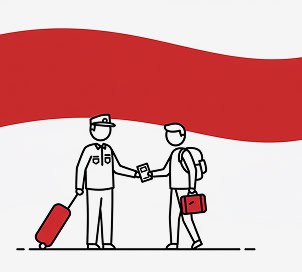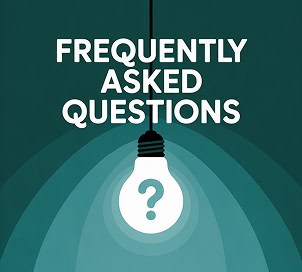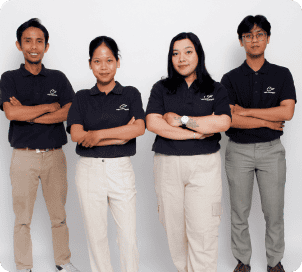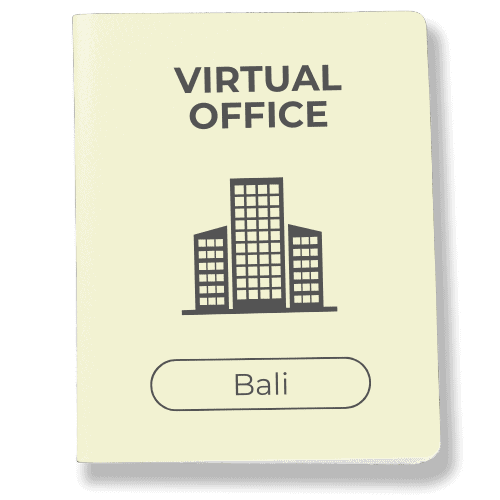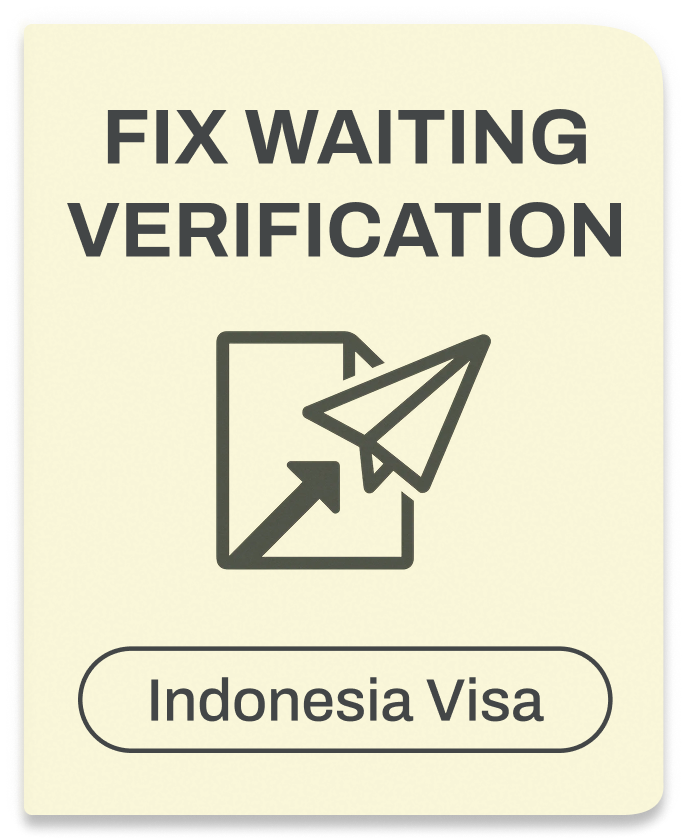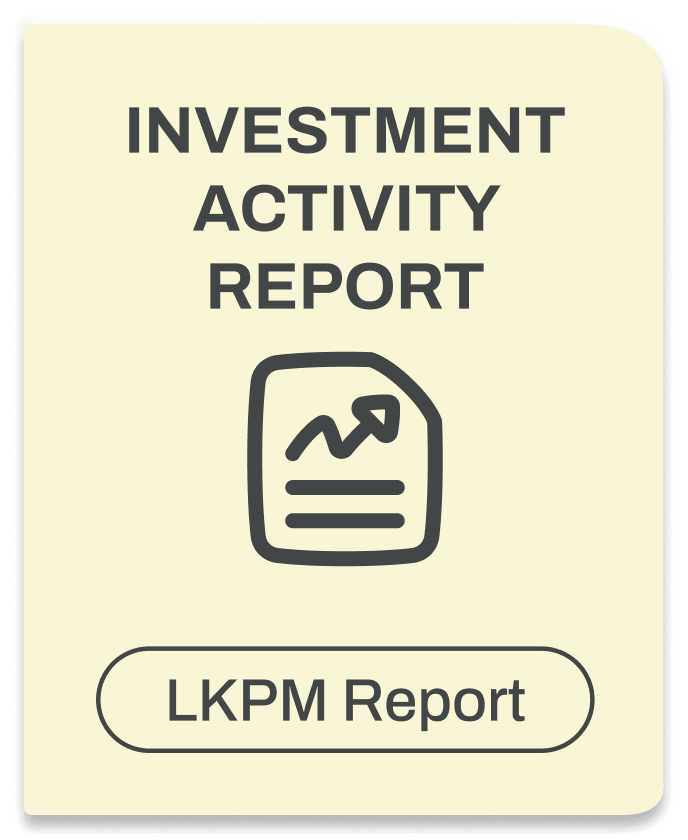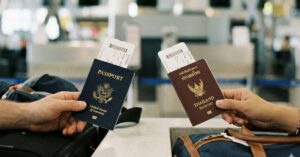Indonesia Tourist Visa (C1) vs Visa On Arrival (B1)

Planning a trip and wondering about the difference between an Indonesian tourist visa vs a visa on arrival? Here’s what you need to know right away: if you’re staying in Indonesia for more than 30 days, the Tourist Visa (C1) is your best choice. If you’re coming for a shorter stay and want a quick and simple option, the Visa on Arrival (B1) or e-VOA will do the job.
Both visas let you visit Indonesia for tourism, but they work a little differently. The C1 visa gives you more time and can be extended twice, up to 180 days total. The B1 visa, on the other hand, starts with 30 days and can only be extended once.
You’ll learn exactly how each visa works, what documents you need, how to apply, and which one fits your trip best. Let’s break it down so you can start your journey with confidence.
Table of Contents
Indonesia Tourist Visa (C1) vs Visa On Arrival (B1) Key Differences
| Feature | Tourist Visa C1 | Visa on Arrival (B1 & e-VOA) |
| Purpose | Leisure, tourism, and visiting family | Tourism, family visits, and short transits |
| Entry type | Single entry | Single entry |
| Maximum stay | 60-days initial | 30-day initial |
| Extensions allowed | Up to 2 × 60 days each | 1 × 30 days |
| Total maximum stay | 180 days | 60 days |
| Application method | Apply at the embassy/consulate or via a visa agency before travel | Get it upon landing at major airports (DPS, CGK, SUB…) or apply online before your trip (e-VOA) |
| Cost | IDR 1,500,000 (~USD 100) | IDR 500,000 (~USD 35) |
| Processing time | 3–7 business days | On arrival: immediate-VOA: 1–3 days |
| Document requirements | Passport (≥6 months) + photo + proof of funds | Passport (≥6 months) + return ticket + e-VOA payment receipt |
| Eligibility | All nationalities (subject to embassy rules) | Nationals of eligible countries only |
| Where to apply | Embassy/consulate or through an agent | Immigration counter at the airport or via the official immigration portal |
| Best for… | Longer stays, multiple extensions | Quick trips, minimal pre-planning |
What Is Indonesia’s Visa on Arrival (B1)?

The B1 Visa on Arrival is a single-entry travel permit that lets you enter Indonesia for tourism, visiting family, or short transits. VoA is a single-entry visa, valid for 30 days with the option to extend once. So, if you leave Indonesia after you extend it, you’ll need a new visa to return.
As the name suggests, you can get a VOA when you arrive at the airport, or apply online in advance through the official immigration portal as an Electronic Visa on Arrival (e-VOA). Both options offer the same benefits, just in different ways of application.
Both versions allow you to visit Indonesia for tourism purposes, including a Bali trip or a short visit anywhere in the country. Whether you apply online or at the airport, the e-VOA and VoA offer the same benefits, just with different ways to apply.
How Long Can You Stay?
Visa on Arrival gives you 30 days in Indonesia, starting from the date of arrival. For example, if you arrive on August 1, your 30-day period begins on that date, and your visa will expire on August 30. It is important to keep track of your arrival date to avoid overstaying.
You can extend it once for another 30 days, which gives you up to 60 days total. The maximum stay allowed under the Visa on Arrival (VoA) policy is 60 days, including the initial period and the extension. Keep in mind, you’ll need to go to an immigration office in person to do the extension.
How Much Does It Cost?
Currently, the B1 Visa on Arrival costs 500,000 IDR, equivalent to approximately $30 USD. You can pay with a Visa, Mastercard, or JCB credit card. However, travelers should also bring sufficient cash (in local currency or major currencies like USD or Euro) in case credit card payment is unavailable at the entry point. If you apply online before your trip, the price is the same.
What Do You Need to Get One?
Before you get the visa, make sure you have:
- A passport that’s valid for at least 6 more months
- A return ticket or a ticket showing you’re leaving Indonesia
- A credit card for payment
- A recent passport-style photo (if applying online)
If you’re applying at the airport, most of this is checked on the spot.
Where Can You Get It?
When arriving in Indonesia, go to the immigration checkpoint to present either your e-VOA or apply for the Visa on Arrival. If you plan to extend your visa, you may need to visit an immigration office later.
And if you’re applying for the e-VOA. Visit the official immigration website, create an account, and upload a valid passport, a return ticket, and any required documents. You’ll get approval by email, often within a few days.
Be sure to double-check the latest visa regulations on the immigration website, and make sure your passport and documents are valid. Having your return ticket and payment ready will help you avoid delays in your visa application.
Is This Visa Right for You?
The B1 Visa on Arrival is great if you’re coming to Indonesia for a short stay, up to 60 days, and you want a quick, simple entry process. If you plan to stay longer or might need to leave and return during your trip, another type of visa like the Tourist Visa C1 might be a better fit. Be sure to review all available visa options, including multiple entry and single-entry visas, to choose the one that best matches your travel plans and duration of stay.
What is the Indonesia Tourist Visa (C1)

If you’re heading to Indonesia for more than a quick trip, the Indonesia Tourist Visa C1 is probably what you’re looking for. Both the VoA and the Tourist Visa C1 allow travelers to enter Indonesia for tourism, but they differ in terms of duration and eligibility.
Think of the C1 visa as a ticket that lets you stay up to 60 days, and even longer if you need it! For travelers who need to stay in Indonesia longer than the standard visa-free or VoA periods, the B-Type visa is another option to consider. Visa applications for both types have different requirements and processes.
How Long Can You Stay?
The C1 Tourist Visa gives you 60 days upfront. That’s already double what you’d get with a Visa on Arrival.
But here’s the best part: you can extend it two more times, and each extension adds another 60 days. That means you can stay in Indonesia for up to 180 days, without having to leave the country and come back.
So, if you’re dreaming of spending a few months in Bali, Java, Lombok, or beyond, this visa gives you room to breathe.
How Do You Apply?
The C1 Tourist Visa can be obtained through an online application process, allowing travelers to apply from anywhere conveniently.
There are two simple ways to apply:
1. Apply Online Yourself
You can apply directly on the official e-Visa website from anywhere in the world. To start your application, you will need to create an account on the official e-Visa portal. The site lets you upload your documents, pay the fee, and receive your visa by email in about 3–5 working days.
2. Use a Trusted Visa Agent
Do you want some help with the visa process? We get it. Dealing with forms, deadlines, and paperwork can feel overwhelming.
That’s where we come in. At Visa-Indonesia, we help travelers like you handle the details, paperwork, submissions, and reminders, so you don’t have to stress. Whether it’s your first visa or an extension, we’ll make sure you’re covered.
You can do it on your own, or let us make it easier.
Reach out to our team, and we’ll walk you through the next steps.
What Documents Do You Need?
To get started, make sure you have:
- A passport that’s valid for at least 6 more months
- A clear photo (passport-style, taken recently)
- Proof of funds, usually around USD 2,000 in your bank account
- A return or onward flight ticket
- A valid email address
- A credit or debit card for the payment
How Much Does It Cost?
Here’s a quick breakdown:
- If you apply on your own, the official fee is usually IDR 1,500,000 (around $95–100 USD)
- If you go through an agent, like Visa-Indonesia, expect to pay IDR 2,300,000–3,000,000 or more, depending on the services they include (like fast-tracking or handling extensions)
While it’s more than a Visa on Arrival, you’re getting more time and flexibility in return.
Can You Extend It?
Yes, and it’s simple, as long as you plan ahead. Each extension gives you an extra 60 days, and you can do this twice. To extend, you (or your agent) will need to visit a local immigration office with:
- Your passport
- Your visa copy
- A few supporting documents (your agent can help with these)
Make sure to apply at least a week before your current stay period ends. It gives immigration time to process everything smoothly.
Why Choose the C1 Visa?
The C1 Tourist Visa is perfect if you:
- Want to stay in Indonesia for more than 30–60 days
- Prefer to avoid the hassle of visa runs or last-minute extensions
- Plan to visit multiple islands or take your time exploring
- Value peace of mind knowing your visa can be extended without leaving the country
It’s also a great choice if you’re visiting family, attending wellness retreats, or just working on your tan without checking your calendar every day.
Onward Ticket Requirements
No matter if you’re coming to Indonesia with a Tourist Visa C1, a Visa on Arrival (B1), or an e-VOA, you’ll need to show an onward or return ticket when you arrive.
This is how immigration makes sure visitors don’t stay longer than they’re allowed. So before your flight, make sure you’ve booked a return trip home, or a ticket to another country. If you don’t have one, you could get stopped at the airport. Some travelers even get told to buy a ticket right there on the spot, which can be stressful and expensive.
If you’re using a C1 visa, you’ll usually need to show your onward ticket when you apply. If you’re coming in with a VoA or e-VOA, immigration officers will check your ticket when you land.
To keep things simple and smooth, just have your onward or return ticket ready before your trip. It’s an easy step that helps you follow the rules and avoid problems at the airport.
Visa Exemption and Requirements
Indonesia offers visa exemption and a Visa on Arrival for foreign nationals from select countries visiting for leisure purposes. When you arrive at an Indonesian immigration checkpoint, you’ll receive an entry stamp that serves as proof of your Visit Visa Exemption or Visa on Arrival.
ASEAN countries eligible for visa-free entry to Indonesia include Cambodia, Laos, Malaysia, Philippines, Singapore, Thailand, Timor Leste, and Vietnam. Visa-free entry allows citizens of these countries to stay in Indonesia for up to 30 days without a visa, but restrictions may apply depending on nationality and travel purpose.
To qualify, you’ll need to meet a few basic requirements: a passport valid for at least six months, a return or onward ticket, and enough funds to support your stay. If you’re not eligible for a Visa Exemption or Visa on Arrival, you’ll need to apply for a visit visa through a sponsor in Indonesia. Sponsors can include corporations, travel agents, or hotels that are registered in the country.
This system ensures that all foreign nationals have a clear path to enter Indonesia, whether through visa exemption, visa on arrival, or a sponsored visa application. Travelers sometimes visit other countries such as Malaysia or Singapore for short trips or visa runs before returning to Indonesia.
Ready to Apply or Extend Your Visa?
Let our visa specialists handle your application.

